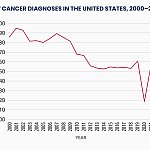
New research suggests that a three-month protocol of time-restricted eating may help people with overweight and obesity lose weight and maintain that loss for at least one year.
Time-restricted eating (TRE), a form of intermittent fasting, has gained popularity in recent years to aid weight loss. The idea is simple: instead of limiting what you eat, limit when you eat. Individuals who practice TRE typically choose a daily eating window of 8 to 12 hours.
The goal is to reduce snacking and overall calorie intake by avoiding food outside the designated window.
While early research on TRE remains limited, new findings presented at the 32nd European Congress on Obesity in Malaga, Spain, on May 11–14, suggest it could be a useful strategy for improving long-term cardiometabolic health.
“TRE offers a simplified and time-efficient alternative to traditional dieting. It eliminates the need for calorie counting and food tracking, which are common barriers to long-term adherence,” said lead investigator Jonatan R. Ruiz, PhD, professor in the department of Sport Sciences at the University of Granada.
“Our findings support the notion that behavioral simplicity enhances sustainability,” he told Healthline.
Ruiz’s team also observed that weight loss occurred regardless of when participants scheduled their eating window, suggesting that the approach offers considerable flexibility and can be adapted to fit individual lifestyles and routines.
The research builds on a previous randomized controlled trial of TRE conducted by the same team, with results published in
The latest findings introduce a significant long-term follow-up period, offering insight into whether those health benefits are sustained over time. However, the research has not yet been submitted for peer-reviewed publication.
The study was a randomized controlled trial that followed 99 adults with overweight or obesity for 12 months in Granada, Spain. The cohort was evenly split between males and females, with an average age of 49.
Participants were randomly assigned to one of four groups for three months:
All groups, including the habitual eating group, took part in a Mediterranean Diet education program.
After the 12-week intervention, all TRE groups lost significantly more weight than the habitual group — between 3.5% and 4.5% of body weight (about 8 pounds), compared to just 1.5% (3 pounds) in the habitual group.
Anthropometric measurements showed greater improvements in waist and hip circumference among the TRE groups. The early TRE group had the most substantial reductions, more than 1.5 inches at both sites. The late and self-selected groups saw similar, though more modest, changes. Meanwhile, the habitual group lost less than half an inch in either measurement.
The most notable results came during the 12-month follow-up, which assessed the durability of those outcomes. Once again, all three TRE groups outperformed the habitual group.
While the habitual group regained about one pound, participants in the TRE groups maintained modest weight loss. Both the early and late TRE groups sustained roughly 2% weight loss, and the self-selected group retained a 0.7% reduction.
Waist and hip outcomes varied by group. The late TRE group showed the greatest improvements, with more than two inches lost at the waist and 1.3 inches at the hips. In contrast, the habitual group gained roughly an inch around the waist. The early and self-selected TRE groups maintained reductions as well, but those changes were not statistically significant.
“Most prior studies on TRE have focused on short-term outcomes, often ranging from 4 to 12 weeks,” said Ruiz. “Our research provides one of the few datasets that includes long-term follow-up after the intervention, and it demonstrates that the initial weight loss benefits are largely maintained over time.”
Adherence rates — the proportion of individuals who were able to stick with the TRE protocol — were also noteworthy, ranging from 85% to 88%. Long-term adherence to any diet is often challenging, so these findings are promising for the potential of TRE.
“We believe this is due to the low cognitive and behavioral burden of TRE compared to traditional calorie-restriction diets. Participants did not need to count calories or eliminate specific foods — they simply adjusted the timing of their meals,” said Ruiz.
Despite the growing popularity of TRE as a form of intermittent fasting, evidence related to weight loss and long-term health benefits is still lacking.
“There is a good deal of conflicting information on the effect of time-restricted eating on weight loss,” said David B. Sarwer, PhD, director at the Center for Obesity Research and Education. Temple University and a spokesperson for the Obesity Society. Sarwer was not affiliated with the research.
“While these results are encouraging, it is very important that when an individual is considering a time-restricted approach to eating, or significantly decreasing caloric intake, his or her physician believes it is a safe approach,” he told Healthline.
A 2023 review of TRE evidence concluded that while many studies show potential benefits, the effects are typically small, and that larger, multiyear trials, especially in healthy populations, are still needed.
TRE has been associated with improvements in:
TRE is not without its critics either. A controversial research presentation at the American Heart Association’s Scientific Sessions in 2024 suggested that TRE was associated with a
However, as a retrospective study, it cannot establish causality, and it’s unclear whether TRE itself was responsible for the increased risk.
Side effects of TRE are also possible, including:
Some people, including those over 75 years of age or pregnant, should not try TRE. As Sarwer pointed out, anyone beginning TRE should consult their physician.
“For an individual with weight-related health problems such as type 2 diabetes or hypertension, decreasing intake or not eating at all for extended periods of time can lead to suboptimal control of those conditions and unwanted side effects throughout the day,” said Sarwer.
Despite these caveats, TRE may still be an appealing and effective aid for weight loss and cardiometabolic health for many people.
“We hypothesize that TRE may induce lasting changes in behavioral patterns and circadian alignment, which persist beyond the active intervention. Restricting food intake to a consistent daily window could reinforce circadian rhythms, improve metabolic efficiency, and reduce late-night eating, which is often associated with excess caloric intake and weight gain,” said Ruiz.





